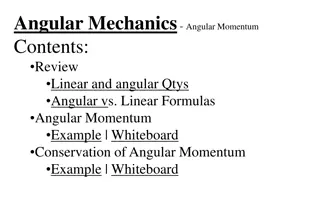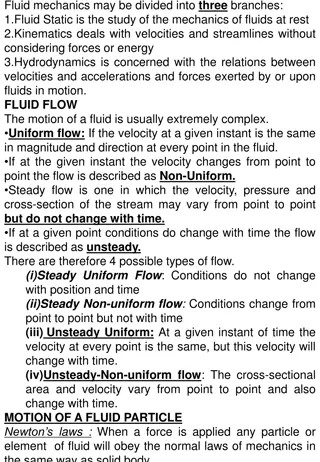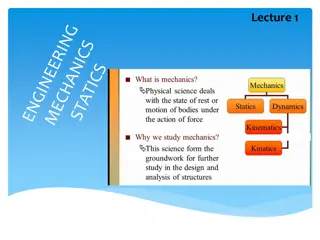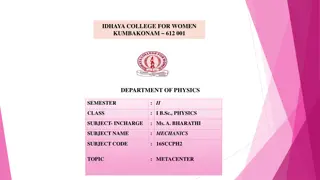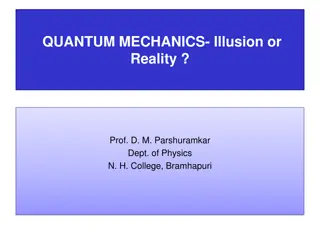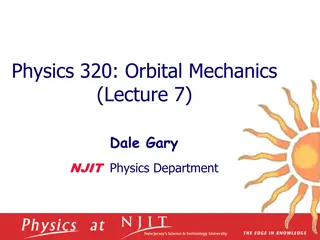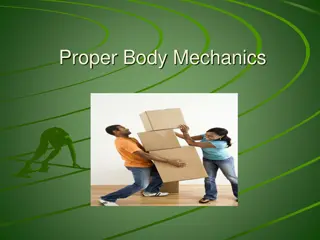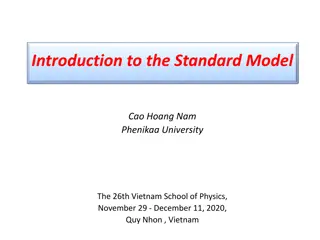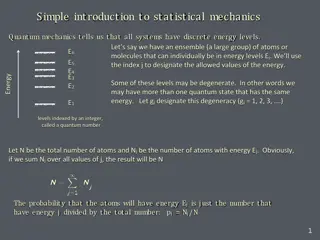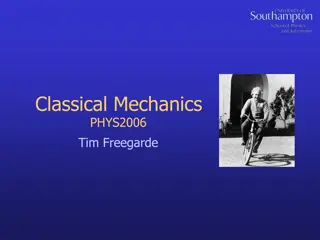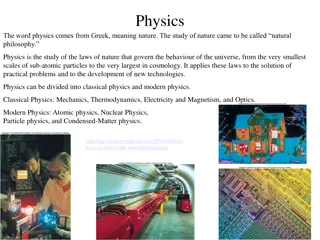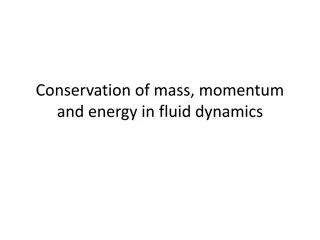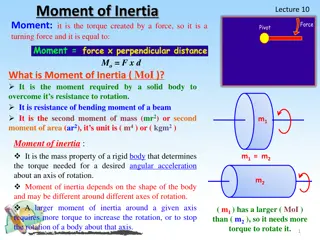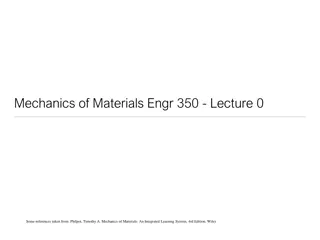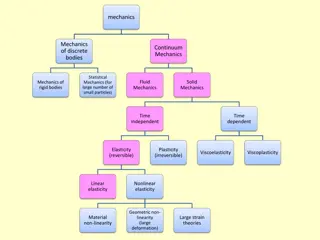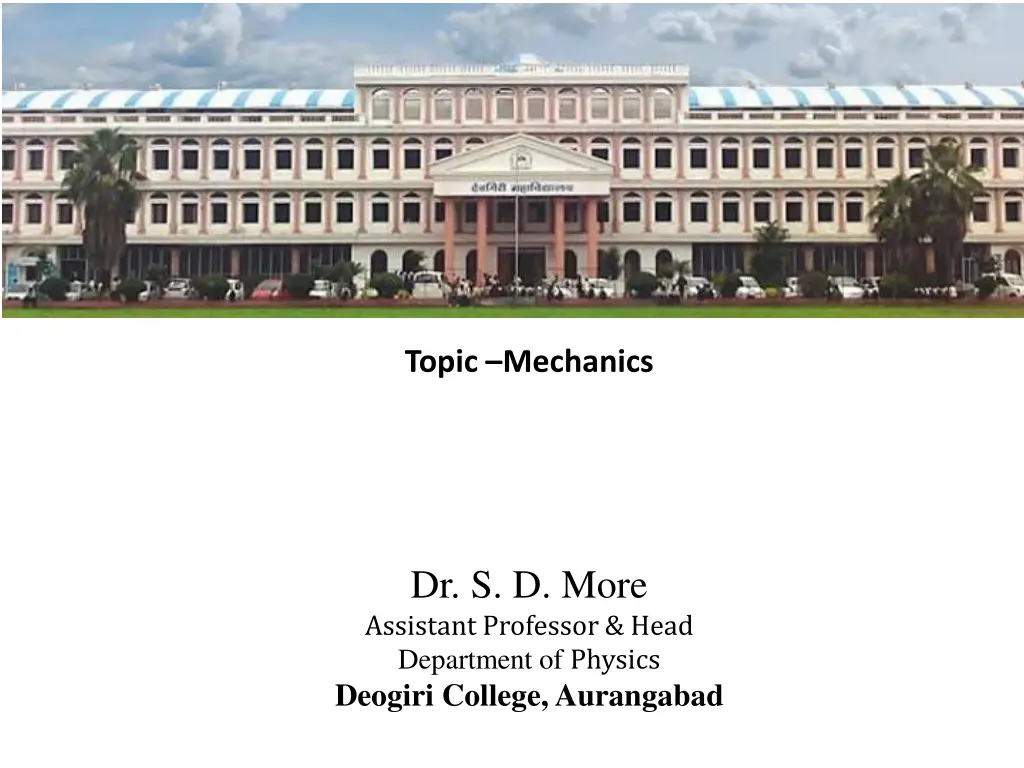
Mechanics in B.Sc. First Year Physics: Study of Motion by Dr. S. D. More
Explore the fundamentals of Mechanics, Elasticity, Viscosity, Ultrasonic Acoustics, and more in B.Sc. First Year Physics Semester-I. Delve into topics such as Newton's Law of Gravitation, Compound Pendulum, and Simple Pendulum. Enhance your understanding of gravitational forces, time periods, and significant principles in Mechanics presented by Dr. S. D. More, Assistant Professor & Head of Department of Physics at Deogiri College, Aurangabad.
Download Presentation

Please find below an Image/Link to download the presentation.
The content on the website is provided AS IS for your information and personal use only. It may not be sold, licensed, or shared on other websites without obtaining consent from the author. If you encounter any issues during the download, it is possible that the publisher has removed the file from their server.
You are allowed to download the files provided on this website for personal or commercial use, subject to the condition that they are used lawfully. All files are the property of their respective owners.
The content on the website is provided AS IS for your information and personal use only. It may not be sold, licensed, or shared on other websites without obtaining consent from the author.
E N D
Presentation Transcript
Topic Mechanics Presented by Dr. S. D. More Assistant Professor & Head Department of Physics Deogiri College, Aurangabad
B. Sc. First Year Physics (Semester-I) (Mechanics, Properties of Matter and Sound) Chapter Content 1. Mechanics 2. Elasticity 3. Viscosity and Surface Tension 4. Ultrasonic and Acoustics
Chapter1: Mechanics The branch of Physics which deals with the study of Motion called Mechanics.
Syllabus Compound Pendulum-Expression of time period, Interchangeability of centre of suspension and oscillation, Kater s Pendulum. Newton s law of Gravitation (Statement only), Gravitational Field, Gravitational Potential, Gravitational Potential of mass, Gravitational potential and field due to spherical shell and solid sphere (at a point, outside, inside and on the surface).
Lets Start . Lets Start . Mechanics
Newtons Law of Gravitation Newton s law of gravitation gives the gravitational force of attraction between any two material objects. Statement Every particle of matter attracts every other particle of matter with a force which is directly proportional to product of their masses and inversely proportional to the square of the distance between them.
Expression If m1 and m2 be masses of the two bodies, A and B , and r is the distance between them, then F is gravitational force of attraction is, F m m ...(i) 1 2 1 F ...(ii) 2 r From (i) and (ii), we get m m F 1 r 2 2 m m = F G 1 r 2 2 where, G is the constant of proportionality called Universal Gravitational Constant. The value of G in laboratory first calculated by British chemist Henry Cavendish in 1798 using his torsion balance G = 6.67 x 10-11 Nm2/ Kg2 (SIunit),G = 6.67 x 10-8 dycm2/g2 (CGS unit)
Time Period of Simple Pendulum Where L- Length of Simple Pendulum g- acceleration due to gravity
Compound Pendulum Time Period of Compoud Pendulum Restoring Torque = - Force Perpendicular Distance = - mg PC ...(1) From SPC , We get PC' sin = SC' However, SC = SC = l PC = l sin ...(2) Restoring Torque = - mg l sin = - mg l sin As is very small, sin Restoring Torque = - mg l ...(3) As, d dt dt dt 2 d d d d = = = = and 2 dt dt
2 d 2 = = I I dt 2 d 2 = ...(4) 2 dt I = But, T 2 d - g m l 2 = ...(5) 2 dt I = T g m l Standard equation of angular SHM is, I 2 d 2 - = 2 ...(6) I dt = T 2 Compairing equation (5) and (6) g m l We get, g m g m l l = = 2 i.e. I I
Modification We know, Law of parallel axes I = Ic+ m l2 If Kc is the radius of gyration about center of gravity (C) then, Ic = m Kc2 I = m Kc2 + ml2 I = m (Kc2 + l2) + + 2 c 2 2 c 2 m (K ) K l l = = T 2 2 + 2 c K ' l l g m g l l = = T 2 ' l g l + 2 c 2 2 c K K l + l L l l = = = + = T 2 2 T 2 ' L l l g g g
Centre of suspension, Centre of oscillation and its Interchangeability 2 c K + l + l 2 c 2 K l l = = T 2 2 g g + 2 c K ' l l = = T 2 ' l g l L = + = T 2 ' L l l g
2 c K l + ' l + l 2 c 2 K ' l ' = = T 2 2 ' g g + 2 c K l ' l l = = T 2 l g ' L = + = T 2 ' L l l g
Katers Reversible Pendulum Definition of Kater's pendulum A compound pendulum with adjustable knife edges placed respectively at the center of suspension and near the center of oscillation and used to determine acceleration of gravity by means of the period of oscillation. + T T = T K and T K , T 1 2 1 1 2 2 2 L = T 2 g where is L the distance between K and K 1 2 L L = = 2 2 2 T 4 g 4 2 g T
Gravitational Field The concept of gravitational field helps us to understand how two masses attract each other, even though there is no physical contact between them. Gravitational field of a body is defined as the space arround itself in which it can acts gravitational force of attraction on any other body. INTENSITY OF GRAVITATIONAL FIELD The strength of the gravitational field is measured in terms of a vector quantity called the gravitational intensity. The gravitational intensity at any point in a gravitational field is represented in magnitude and direction by the force acting on a unit mass placed at that point

